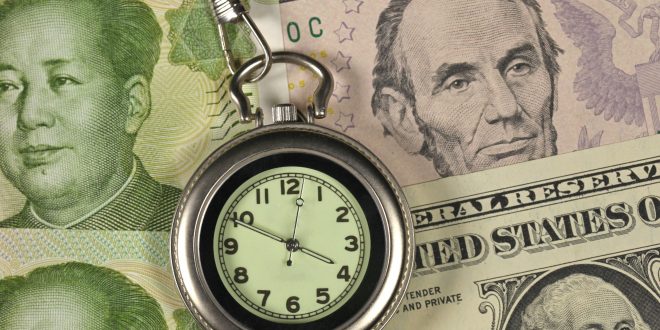Weekly Recap: 15-19 March
The third week of March was highlighted by major central bank meetings around the world, from the United States to England and Japan. In the U.S., the Federal Reserve decided to maintain interest rates unchanged near 0%, as well as the current pace of asset purchases at $120 billion per month until the maximum employment and 2% inflation targets are achieved.
The Fed now expects the U.S. economy will grow by 6.5% this year, compared with an expected 4.2% growth rate last December. If achieved, this would be the highest growth rate for the American economy since it expanded by 7.2% in 1984. Moreover, the Fed expects the unemployment rate to decline from the current level of 6.2% to 4.5% by the end of 2021, 0.5% less than the 5% rate expected in the December meeting.
In the United Kingdom, the Bank of England (BoE) decided to hold interest rates unchanged. In addition, members of the Monetary Policy Committee (MPC) voted unanimously to maintaining the current pace of the quantitative easing (QE) program at GBP 895 billion, which means that the British central bank will continue to buy up to GBP 875 billion worth of the British government’s debt instruments and GBP 20 billion of corporate bonds
In Japan, the Bank of Japan (BoJ) decided to widen the range it allows long-term interest rates to move within by 0.25% above and below the target, with the aim of sustaining its current ultra-easy monetary policy and achieving the 2% inflation target.
Dollar
The U.S. Dollar (USD) stabilized over the week, supported by the rise in Treasury bond yields to their highest level in about 14 months, as well as the Federal Reserve’s decision to end the temporary change to the supplementary leverage ratio (SLR) for depository institutions by the end of the month as scheduled.
The Dollar Index (DXY), which measures the greenback’s performance against a basket of six major international currencies, rose by about 0.07% for the week.
Euro
The US dollar ended the week higher as US Treasury yields settled near their highest levels. The EUR/USD pair fell down to 1.1873 on Friday, closing the week just above 1.1900. Rising hopes for an economic recovery which weighing on safe-haven bonds despite wary of weak inflation. The Federal Reserve announced that it will not extend the temporary relief from capital-requirement for banks, raising optimism. The International Monetary Fund also indicated that there are signs of recovery in the global economy but warned that significant risks remain but that investors continue to forgo safe government bonds.
Pound
The British pound fell against the US dollar for two consecutive days, to end the week in the red below the 1.3900 level. The decline came as it was reported in the United Kingdom that government spending drove public finances deeper than the deficit in February, with public sector net borrowing rising to 18.413 billion pounds a month, the highest level ever. While British Prime Minister Boris Johnson plans to extend the lockdown in the country until October.
Gold
Higher demand from investors helped gold prices achieve 1.3% weekly gains, supported by the recent expectations of the Federal Reserve. The surge in Treasury yields, which were fueled by expectations of a rise in inflation above 2% this year and a very strong economic recovery in the United States, led to the decline of the stock market, prompting increased demand for safe havens.
Oil
Oil prices declined on a weekly basis, due to worries about the recovery of the global demand. In addition, a resurgence in coronavirus cases in Europe, which resulted in another four-week lockdown in France, reflected negatively on the demand outlook, despite expectations of economic recovery in major markets.
Brent crude futures finished the week lower by 6.73%, while the U.S. benchmark West Texas Intermediate (WTI) futures declined by 6.4%.
European Stocks
European stocks narrowed their weekly gains, amid concerns about the slow rollout of vaccines, a rise in the number of new Coronavirus infections and re-imposing lockdown measures in France, in addition to the rise in U.S. Treasury bond yields. The pan-European STOXX Europe 600 index gained 0.2% for the week.
Wall Street
The New York Stock Exchange (NYSE) showed a mixed performance over the week. Upbeat expectations for U.S. economic growth by the Feral Reserve helped improve investors’ sentiment, but rising Treasury bond yields and the Fed’s decision to end the temporary change to the supplementary leverage ratio (SLR) for depository institutions by the end of the month as scheduled led to losses by the major indices of Wall Street. In addition, the energy sector was negatively affected by the decline in oil prices.
The Dow Jones Industrial Average declined by 0.5%, while the S&P 500 and Nasdaq Composite indices lost 0.8% each.
Calendar
The beginning of the economic calendar was the retail sales data for the United States, Canada and Australia.
Data from the US Census Bureau showed that US retail sales fell 3% in February to $561.7 billion. The reading followed the January increase of 7.6% (revised from 5.3%) and was worse than market expectations of a 0.5% drop.
“Total sales for December 2020 through February 2021 period were up 6.0% from the same period a year ago. Retail trade sales were down 3.1% from January 2021, and up 9.5% above last year.” The publication read.
In Canada, published data from Statistics Canada showed that retail sales fell by 1.1% in January to $54.5 billion, after the decline recorded in December at 3.4%, but better than market expectations of a 3% decline.
Core retail sales also posted their second consecutive decline, 1.4% in January,
The first reading of Australia’s Retail Sales dropped way below 0.5% prior and 0.4% market consensus to -1.1% MoM during the latest announcement.
Next on the economic calendar was inflation data from Canada and the Eurozone.
Canadian data showed that inflation in Canada measured by the consumer price index reached 0.5% in February. On an annual basis, the CPI rose to 1.1% from 1% but fell short of market expectations of 1.3%.
Moreover, the Bank of Canada core CPI which excludes in energy and food prices fell to 1.2% year-on-year from 1.6% in January, beating expectations of 1.4%.
In the Eurozone, inflation, measured by the CPI, remained unchanged at 0.2% month-on-month and 0.9% year-on-year as expected.
Further details of the report published by Eurostat revealed that the annual Core CPI remained steady at 1.1%. This reading came in line with analysts’ estimates as well.
The German ZEW headline numbers for March showed that the Economic Sentiment Index rose sharply to 76.6 versus 74.0 expectations and 71.2 last.
While the sub-index Current Conditions figure arrived at -61.0 in March versus -62.0 expected and -67.2 booked previously.
Meanwhile, the Eurozone ZEW Economic Sentiment for March jumped to 74.0 vs. 65.1 expected and 69.6 last.
Coronavirus
Official data showed that the number of Covid-19 deaths in the United Kingdom fell to 33 Sunday, March 21, the lowest number since the fifth of October, and much less than what was recorded in January and February, when the deaths reached their peak and exceeded a thousand deaths per day.
The confirmed cases reached 5,312, while the total number of cases during seven days reached 38,145, down 4.4% from the previous seven-day period.
The data showed that the number of people who received at least one dose of the protective vaccine against Covid-19 rose to 27.6 million people, which is far more than half of the adult population. The number of people who got the two doses of the vaccine was 2.3 million.
In China, A spokesman for China’s National Health Commission, Mi Feng, said on Sunday that his country had used 74.96 million doses in the COVID-19 vaccination campaign, as of Saturday.
The number of doses used in the campaign had reached about 65 million doses as of March 14, indicating an increase of ten million doses in less than a week, as it intensified its campaign aimed at vaccinating 40% of its 1.4 billion population by the middle of the year.
 Noor Trends News, Technical Analysis, Educational Tools and Recommendations
Noor Trends News, Technical Analysis, Educational Tools and Recommendations





